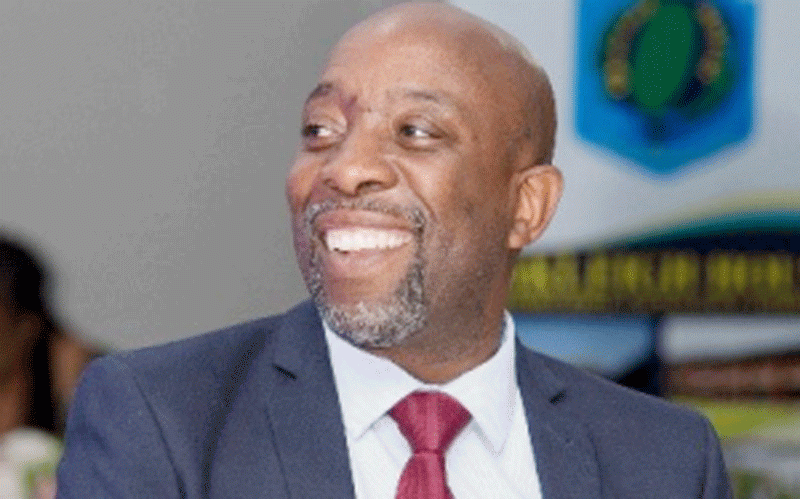
ZIMBABWE is said to be drowning in debt amid allegations that it is flouting sections of the Public Finance Management Act (PFMA) which stipulate the aggregate amount that may be borrowed by government in any financial year.
The country is said to be borrowing more than the stipulated 30% of the general government revenue in the previous year. NewsDay (ND) reporter Thomas Chidamba caught up with Zimbabwe Coalition on Debt and Development (Zimcodd) executive director Janet Zhou (JZ) to discuss financial transparency and accountability in the second republic. Read on…
ND: What is the state of the country’s domestic and international debts?
JZ: Public debt as at end of December 2020 was $705,6 billion (65,9% of gross domestic product), the bulk being external debt (97,6% of the total debt) with the remainder being domestic debt. However, government signed a US$3,5 billion Global Compensation Deed for compensation of farm improvements to former commercial farmers.
The amount will add to the debt levels when the former commercial farmers sign a cession agreement. Government continues to rely on domestic financial and capital markets to meet short-term budget financing requirements.
In this regard, government raised $7,85 billion via the issuance of Treasury Bills through the auction system, as well as through private placements. As at the end December 2020, the total public and publicly-guaranteed external debt amounted to US$8,434 billion. External debt to multilateral creditors as at end December 2020, amounted to US$2,68 billion, of which US$1,53 billion is owed to the World Bank Group, US$729 million to African Development Bank, US$356 million to the European Investment Bank and US$68 million to other multilateral creditors. On the other hand, bilateral external debt amounted to US$5,76 billion, with US$3,78 billion owed to the Paris Club creditors and US$1,67 billion to non-Paris Club creditors.
ND: Is government operating within the provisions of PFMA on borrowing limits?
JZ: No, it is not. Consistent with section 300 of Zimbabwe Amendment (No 20) Act of 2013, section 61(a-b) of PFMA, the aggregate amount that may be borrowed in any financial year shall not exceed 30% of the general government revenue in the previous year.
- Chamisa under fire over US$120K donation
- Mavhunga puts DeMbare into Chibuku quarterfinals
- Pension funds bet on Cabora Bassa oilfields
- Councils defy govt fire tender directive
Keep Reading
Furthermore, the aggregate of the amounts that may be guaranteed in any financial year in respect of indebtedness or other obligations raised, incurred or established, as the case may be, within Zimbabwe shall not exceed 40% of general revenues.
The government has not only disregarded the Constitution and the PFMA, but also section 11(1) of the Reserve Bank Act (Chapter 22:15), which states that borrowing from the Reserve Bank of Zimbabwe (RBZ) shall not exceed 20% of the previous year’s government revenues at any given point. As of August 31 2018, the overdraft with the central bank stood at US$2,3 billion against the statutory limit of US$762,8 million.
ND: So there has not been compliance with the country’s borrowing laws?
JZ: Yes, for example, despite having such comprehensive national and regional frameworks, it suffices to say that compliance with the legislative provisions, in particular, relating to loan acquisition and debt management, has generally been low. It is not a secret that the bulk of Zimbabwe’s national debt was and continues to be acquired without parliamentary approval or following the constitutional and statutory frameworks. Zimbabwe is currently in debt distress with public and publicly-guaranteed debt at unsustainable levels of 97% of GDP against the statutory provision of 70%. The huge debt overhang impacts on the country’s credit worthiness and it further raises the country’s risk profile resulting in massive disinvestment.
As a signatory to the Southern African Development Community (Sadc) Protocol on Finance and Investment, Zimbabwe is also bound by the Sadc debt sustainability threshold. Annex 2 of the protocol compels member States to maintain a public debt to GDP ratio at a level of or below the 60% threshold.
Despite this provision, Zimbabwe set its debt to GDP ratio at 70% in violation of the regional benchmark. We expect that Parliament as empowered by section 300 of the Constitution must make final decisions on government borrowing and State guarantees, limits of State borrowing, public debt and guarantees. This will ensure transparent debt management in the country.
ND: There are proposed amendments to PFMA, what changes do you want effected on the Bill?
JZ: Let me begin by saying this amendment was long overdue so we commend government for coming up with the PFMA Amendment Bill so that it is in line or is consistent with the Constitution, in particular, section 298. As Zimcodd, we submit that the proposed PFMA Bill should provide for mechanisms for the full implementation of the Auditor-General’s recommendations by public and constitutional bodies.
Historically, the implementation of the recommendations has been characterised by reluctance of public entities with no resolve and accountability. Citizens are, therefore, calling for mechanisms to enforce and monitor implementation of the recommendations by public entities with penalties put in place in cases of non-compliance.
The Act should further provide for the establishment of a committee in each public entity to enforce implementation of the recommendations by the AG’s Office and mandate Parliament to play a role in enforcing the implementations of such recommendations.
ND: Does PFMA also speak on issues of the national budget?
JZ: The PFMA should strengthen and advance local and national budget transparency, participation and oversight. Citizens are demanding that the local and national budgets should only be approved upon sufficient evidence of genuine and meaningful citizen engagement and consultation in their preparation. This requires adequate notice to the public and proper timing for the meetings to enable citizens to participate. PFMA should compel the Finance and Economic Development ministry to timely produce and avail to citizen versions of key budget documents including the budget strategy paper and the budget itself. This will increase citizen participation in the national budget processes. Furthermore, measures should be put in place to ensure compliance and adherence by Treasury.
Zimcodd is also proposing the repeal of the amendment to section 327 of the Constitution to ensure that the PFMA strengthens Parliament’s oversight role on public finance management. The essence of the PFM Bill in strengthening public finance management in Zimbabwe will be undermined if the amendment to section 327 is allowed to pass. This will limit Parliament’s power to approve international agreements even if such agreements impose fiscal obligations on Zimbabwe.
The Bill should conform to section 308(4) of the Constitution which states that an Act of Parliament must provide for the speedy detection of public financial misconduct by custodians of public funds and the discipline and punishment of the perpetrators. The Act should, therefore, set deterrent and punitive measures for those who engage in public financial misconduct.
ND: Where does Zimbabwe stand on illicit financial flows?
JZ: Zimbabwe has lost approximately US$3,179 billion to illicit financial flows in the last two decades and approximately US$1,5 billion in gold smuggling in 2020 against US$800 million official exports.
ND: How do you rate the financial inclusion of women, youth and other vulnerable groups in Zimbabwe?
JZ: It is not impressive. Women and youth face numerous structural impediments to accessing capital and productive resources especially loans to finance economic initiatives. This also applies to public resources which are supposed to be redistributed in a manner that helps to reverse historical and structural barriers. Instruments to deploy financing to young people and women such as the women’s empowerment are misaligned to the reality of informalisation where the bulk of Zimbabweans conduct business in cash and on group terms. A lot of work needs to be done to align existing financial instruments with the needs of productive women and youths in the unbanked informal and agricultural sectors.
ND: Zimcodd launched a COVID-19 accountability tracker, what have you found so far?
JZ: That the economic impacts of COVID-19 disproportionately affected women and youth from historically resource poor background. According to field reports, beneficiaries of COVID-19 cushioning allowances last received support ($300/per household/per month) in September 2020. Government must avail public information and render transparent the utilisation of the numerous funding streams meant for COVID-19, for example, the $600 million schools reopening budget, the COVID-19 youth relief fund; Government Employees Mutual Savings Fund, among others. Government has had to take a number of loans to finance its COVID-19 interventions, especially given the increased pressure on public resources and the need for a publicly-supported vaccination drive.
However, Zimcodd urges parliamentary oversight on COVID-19 debt contracting processes and greater scrutiny of debt agreements. The release of the AG’s report is vital to illuminate debt management and public resource management trends in the context of an unprecedented pandemic.
- Follow Thomas on Twitter @chidambathomas










